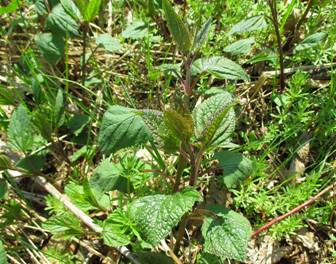
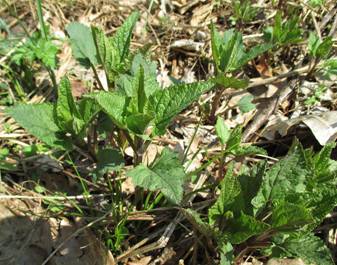
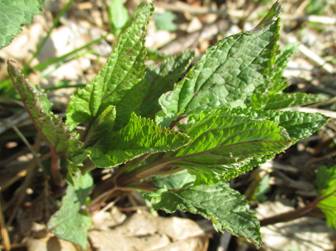
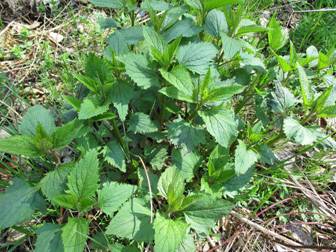

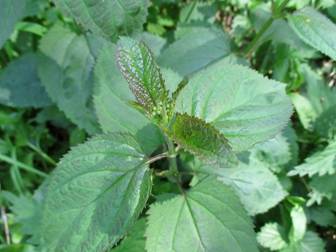
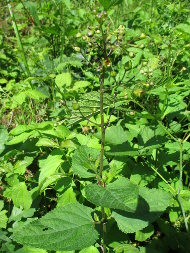
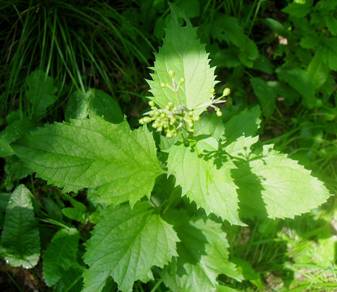
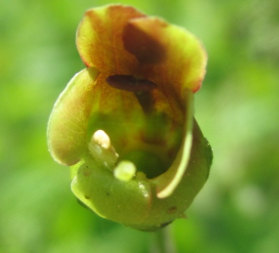
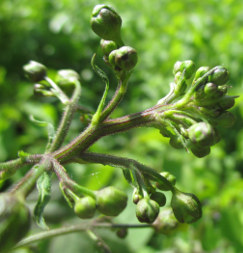
Figwort, common or woodland (Scrophularia nodosa), fam. Scrophulariaceae.
Occurs in quite humid parts of the forest. Young shoots look similar to stinging nettles. Later, the loose panicle inflorescences appear on the tops. The flowers are inconspicuous and with no smell (though they contain nectar), and make an impression of not opened completely. Then the capsule fruits with fine seeds ripen. The species name "nodosa" (knotted) was given for the plant's tubers, its wintering parts.
Figwort provides diuretic, sudorific, laxative, antiinflammatory, anthelminthic and wound-healing action. The "knottedness" has always made people encouraged to try it for treating the diseases involving nodules formation, for example mumps (parotitis, lat. scrophula). It was also widely used in veterinary: the Russian name "Norichnik" originates from "Noritsa", a deep wound on horse's neck, making the animal unable for draft works. Now this word has been forgotten, so the Russian name is not understandable at all, even for the natives. However, figwort is toxic, for animals as well.